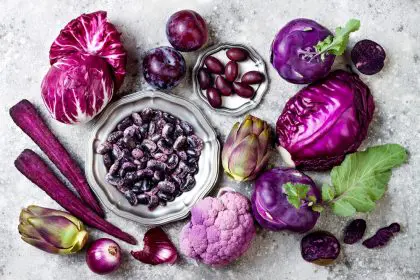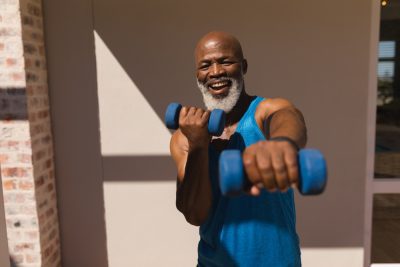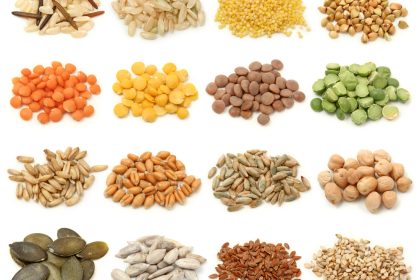The quest for effective post-workout recovery solutions leads many fitness enthusiasts to expensive supplements, specialized equipment, and elaborate recovery protocols. Yet one of the most powerful recovery aids comes in a humble, delicious package found in produce sections year-round: cherries. This ruby-red fruit contains a remarkable combination of compounds that specifically target exercise-induced muscle damage and inflammation, often outperforming commercial recovery products in scientific evaluations. Understanding how this unassuming fruit delivers such impressive benefits reveals an accessible, natural solution for everyone from weekend warriors to dedicated athletes.
The pain-fighting compounds in cherries
The remarkable recovery benefits of cherries stem from their unique phytochemical profile that targets multiple inflammation pathways simultaneously. Tart varieties contain particularly high concentrations of anthocyanins—the compounds responsible for their deep red pigmentation—which function as powerful antioxidants in the body. These anthocyanins neutralize the free radicals produced during intense exercise that contribute to muscle cell damage and subsequent soreness.
Beyond anthocyanins, cherries contain significant amounts of quercetin, isoqueritrin, and chlorogenic acid—additional plant compounds with demonstrated anti-inflammatory effects. These compounds inhibit cyclooxygenase enzymes (COX-1 and COX-2) through similar pathways as many over-the-counter pain medications, but without the potential side effects. This enzyme inhibition reduces the production of prostaglandins that create the sensation of pain and inflammation in damaged tissues.
Cherries also provide a natural source of melatonin, a hormone that regulates sleep-wake cycles and possesses independent anti-inflammatory properties. This combination creates a multi-pronged approach to recovery, simultaneously addressing oxidative damage, inflammatory signaling, and sleep quality that collectively accelerate the repair process after strenuous exercise.
How muscle soreness develops after workouts
Understanding why cherries prove so effective requires recognizing how post-exercise muscle soreness develops. When muscles perform unaccustomed or intense activity, they experience microscopic damage to muscle fibers—a normal and necessary part of the adaptation process that ultimately builds stronger, more resilient tissue. This damage triggers an inflammatory response that serves essential healing functions but also creates the pain and stiffness known as delayed onset muscle soreness (DOMS).
This soreness typically begins developing 12-24 hours post-exercise, peaks between 24-72 hours, and gradually resolves as repair processes complete. The inflammatory cascade involves multiple cellular signals, oxidative stress, and fluid accumulation around damaged tissues. The severity and duration depend on exercise intensity, individual fitness levels, and genetic factors influencing recovery capacity.
The most severe soreness typically follows eccentric muscle contractions—movements where muscles lengthen while under tension, like downhill running or lowering weights—which cause greater mechanical disruption to muscle fibers than concentric or isometric contractions. This soreness pattern explains why certain workout types consistently produce more pronounced recovery challenges that benefit most significantly from cherry consumption.
Timing cherry consumption for maximum benefit
The effectiveness of cherries for muscle recovery depends significantly on consumption timing and duration. Maximum benefits occur when cherry consumption begins several days before strenuous activity and continues through the recovery period, creating sustained anti-inflammatory support through the entire exercise and recovery cycle.
For planned intense training sessions or competitions, beginning cherry intake 4-5 days beforehand establishes baseline levels of beneficial compounds in tissues. Continuing consumption for 2-3 days after the event maintains these levels during the critical recovery window when inflammation peaks. This extended protocol particularly benefits those participating in events causing substantial muscle damage, like marathons, intense resistance training, or tournament situations with repeated performance demands.
For those unable to follow the extended protocol, cherry consumption immediately after exercise and continuing for 48 hours still provides significant benefits, though somewhat reduced compared to the longer approach. The post-exercise window represents a particularly important time as the inflammatory cascade begins accelerating, making immediate intervention most effective for moderating the response.
Fresh vs processed cherry options
Both fresh cherries and processed cherry products offer recovery benefits, though with important differences in convenience, availability, and compound concentration. Fresh cherries, when in season, provide the complete matrix of beneficial compounds in their natural form and ratios. The whole fruit also delivers valuable fiber that supports digestive health and helps regulate the absorption of other nutrients that facilitate recovery.
Cherry juice and concentrate offer year-round availability and convenience, particularly for travelers or those with hectic schedules. These liquid forms typically contain higher concentrations of anthocyanins and other anti-inflammatory compounds per serving than whole fruits, as they incorporate the skin and flesh of multiple cherries. However, they also contain higher sugar content and less fiber than whole fruits, considerations for those monitoring carbohydrate intake.
Freeze-dried cherry powder and cherry extract supplements provide maximum convenience and standardized doses of key compounds. These options work well for those seeking precise intake amounts or who require portable options. The processing methods significantly impact the preservation of bioactive compounds, with freeze-drying typically maintaining higher levels than heat-based drying techniques.
Comparing cherries to other recovery strategies
When evaluated against common recovery approaches, cherries demonstrate comparable or superior effectiveness for reducing muscle soreness while offering additional health benefits. Compared to over-the-counter non-steroidal anti-inflammatory drugs (NSAIDs) like ibuprofen, cherries provide similar pain reduction without the potential gastrointestinal, kidney, or cardiovascular side effects associated with regular NSAID use.
Cherry consumption also compares favorably to many commercial post-workout supplements. While protein supplements address the rebuilding aspect of recovery, they typically don’t target the inflammatory component directly. Specialized anti-inflammatory supplements often isolate single compounds, missing the synergistic benefits of the multiple bioactive substances working together in whole cherries.
Recovery modalities like ice baths and compression garments primarily affect blood flow and fluid dynamics in tissues, while cherry consumption addresses the underlying biochemical processes driving inflammation. This makes cherries complementary to these physical recovery methods rather than competitive, with potential synergistic effects when combined appropriately.
Beyond muscle recovery: Additional benefits
The recovery advantages of cherries extend beyond reduced muscle soreness to several areas that indirectly enhance training results. Sleep quality improvements rank among the most significant secondary benefits, with cherry consumption shown to increase sleep duration and reduce nighttime awakenings. This sleep enhancement stems from cherries’ natural melatonin content and their effect on tryptophan availability, a precursor to both melatonin and serotonin production.
Improved sleep delivers cascading benefits for recovery, as the deepest sleep stages coincide with peak growth hormone release—a critical factor in tissue repair and adaptation. By enhancing sleep architecture, cherries create an optimal hormonal environment for recovery beyond their direct anti-inflammatory effects.
Cherry consumption also supports immune function during high-training periods when intense exercise might otherwise suppress immune responsiveness. The antioxidant properties help neutralize the oxidative stress that contributes to exercise-induced immune suppression, helping maintain defensive capabilities during heavy training blocks when illness risk typically increases.
Optimizing cherry benefits for different workout types
Different exercise modalities create varying recovery challenges that influence optimal cherry usage strategies. Endurance activities like long-distance running, cycling, or swimming generate significant oxidative stress and systemic inflammation that benefit from higher cherry consumption volumes spread consistently throughout training periods.
High-intensity interval training (HIIT) and plyometric workouts produce acute inflammation spikes that respond well to targeted cherry consumption clustered around the specific training sessions. For these workout types, timing becomes particularly important, with pre-workout consumption helping prepare tissues for the impending stress.
Resistance training recovery depends on the specific program design. Traditional bodybuilding approaches with their emphasis on muscle damage and hypertrophy benefit substantially from cherries’ anti-inflammatory effects. However, strength-focused programs relying more on neural adaptations than tissue damage may require more moderate approaches, as some inflammatory signaling facilitates desired training adaptations.
Real-world implementation strategies
Incorporating cherries into recovery routines requires practical approaches that accommodate various lifestyles and training patterns. For fresh cherry consumption, keeping washed, ready-to-eat cherries visible in refrigerators increases likelihood of regular consumption. Preparing portioned containers for post-workout snacking removes barriers to consistent use when fatigue makes additional food preparation unappealing.
For those using cherry juice, establishing specific consumption times linked to existing habits improves adherence—perhaps alongside morning coffee, as part of post-workout nutrition, or with evening meals. The slightly tart flavor of concentrated cherry products pairs well with smoothies, yogurt, or oatmeal for those finding the taste too intense in isolated form.
Travelers and competitors benefit from portable options like cherry concentrate in travel-friendly packaging or freeze-dried cherry capsules that maintain efficacy without refrigeration requirements. These options prove particularly valuable during competitions or training camps when normal food routines face disruption.
Developing a personalized cherry protocol
Creating an individualized cherry strategy requires consideration of training patterns, recovery needs, and practical constraints. Beginners experiencing significant soreness with new exercise programs benefit most from consistent daily cherry intake to manage the pronounced inflammatory response characteristic of early training phases. Intermediate athletes might focus cherry consumption around their most challenging weekly sessions, using targeted timing to address predictable recovery needs.
Advanced athletes can periodize cherry consumption alongside training cycles, increasing intake during high-volume or intensity phases when recovery demands peak, while reducing during deload periods when some inflammatory signaling supports adaptation processes. This periodized approach prevents adaptation to cherry’s anti-inflammatory effects while maximizing benefits during critical training windows.
Individual response variation necessitates self-experimentation with timing, forms, and amounts. Some individuals show pronounced benefits from relatively small amounts while others require larger or more frequent consumption for noticeable effects. Tracking soreness levels, recovery perception, and subsequent performance provides valuable feedback for protocol refinement.
Potential considerations and limitations
While cherry consumption benefits most individuals, certain considerations warrant attention for specific populations. Those with diabetes or blood sugar management concerns should monitor responses to juice forms with their higher glycemic impact compared to whole fruit options. The natural fruit sugars in cherries generally cause minimal issues for most active individuals but may require adjustment for those with particular sensitivity.
Individuals taking blood thinning medications should consult healthcare providers before substantially increasing cherry intake, as the natural compounds may enhance the effects of these medications. Similarly, those with known sensitivities to salicylates might experience reactions to cherries due to their natural salicylate content.
From a practical perspective, seasonal price fluctuations of fresh cherries can create budget considerations for consistent long-term use. Frozen cherries offer a more economical year-round option that preserves most beneficial compounds, providing a practical alternative during off-season periods when fresh varieties command premium prices.
The remarkable recovery benefits of cherries demonstrate how whole food solutions often outperform isolated supplements through the synergistic action of multiple compounds working through complementary pathways. This accessible fruit offers a simple, natural approach to managing exercise-induced soreness that supports training consistency and progression. Whether consumed fresh, as juice, or in concentrated forms, cherries provide evidence-based recovery support accessible to athletes at all levels—proving that sometimes the most effective sports nutrition solutions are found in nature’s simplest offerings.















